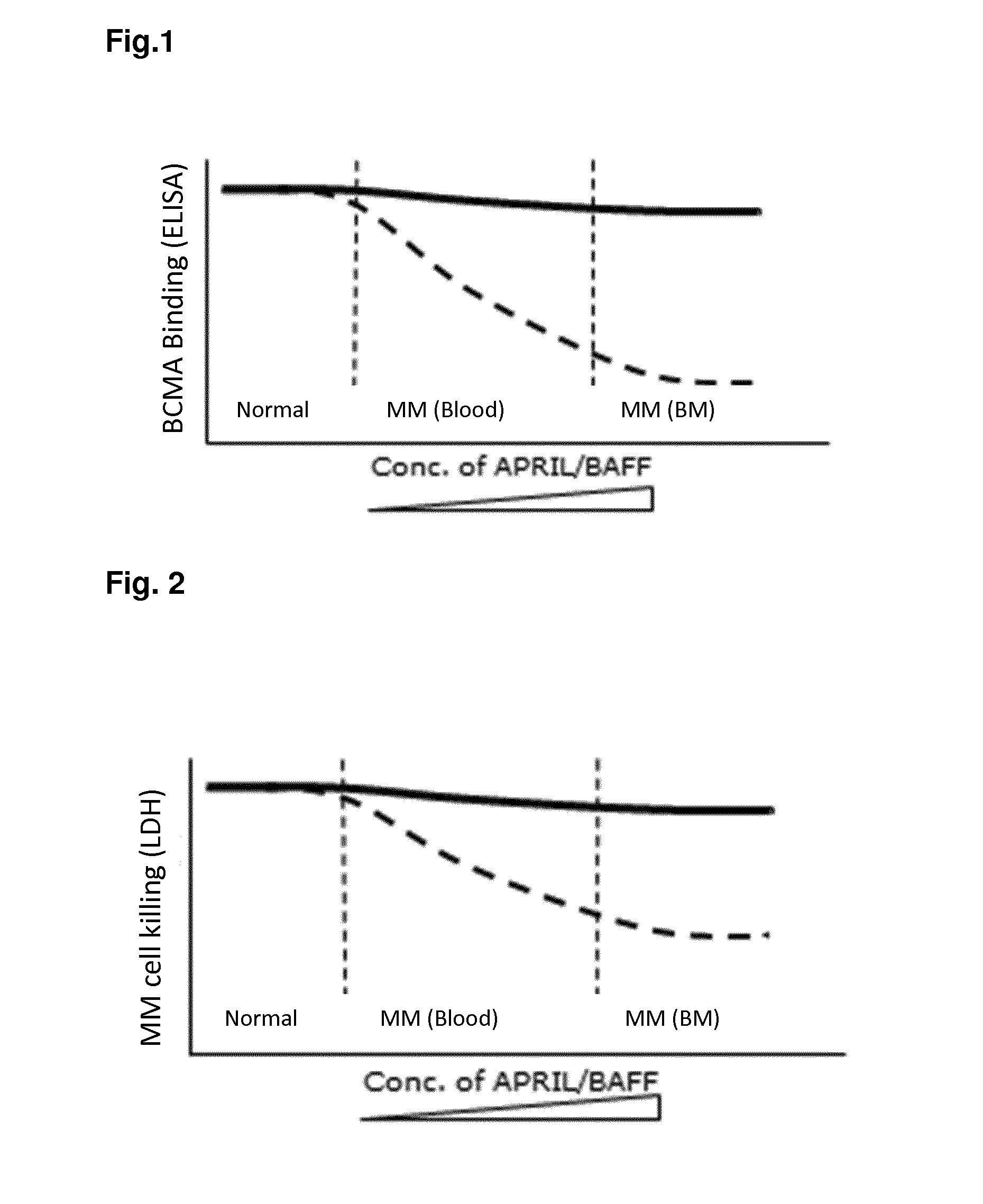Method for the selection of antibodies against bcma
a technology of bcma and antibodies, applied in the field of bcma antibody selection, can solve the problems of inability to easily develop recombinant techniques, no data describing the progression towards the clinic, etc., and achieve superior adcc and cell-depleting activities, superior cytotoxicity activities, and high efficacy
- Summary
- Abstract
- Description
- Claims
- Application Information
AI Technical Summary
Benefits of technology
Problems solved by technology
Method used
Image
Examples
example 1
Generation of Anti-BCMA Antibodies
Example 1A
Production of Antigens and Tool Reagents
example 1a1
Recombinant, Soluble, Human BCMA Extracellular Domain
[0205]a) Recombinant, soluble, human BCMA extracellular domain (“BCMA ECD”) is produced as described in Ryan, 2007 (Mol Cancer Ther; 6 (11): 3009-18). Briefly, the human BCMA extracellular domain (ECD; amino acids 5-51; NP—001183) is amplified with forward primer 5-AAGCTTGGATCCATGTTGCAGATGGCTGGGCAGTGCTCC-3 (SEQ ID NO:11) incorporating a BamH1 site (bold, underlined) and reverse primer 5-GAATTCGCGGCCGCTCATCCTTTCACTGAATTGGTCACACTTGCATTAC-3 (SEQ ID NO:12) incorporating a stop codon (italic) and NotI site (bold, underlined) using IMAGE clone 687194 (Invitrogen) as a PCR template. The PCR product is cloned into an expression vector comprising a glutathione S-transferase gene upstream of glutathione S-transferase (GST), transformed into an E. coli strain comprising T7 RNA polymerase gene under the control of the lacUV5 promoter, and the induced protein is purified at 4° C. on an ÄKTAexplorer (GE Healthcare). The cell pellet is lysed in ...
example 1a2
Recombinant, Truncated Murine APRIL
[0207]a) Recombinant, truncated murine APRIL is produced as described in Ryan, 2007 (Mol Cancer Ther; 6 (11): 3009-18). Briefly, murine APRIL (residues 106-241; NP—076006) is amplified from IMAGE clone 5290965 (Invitrogen) and cloned into a bacterial expression vector fused at the COOH terminus to Gene-specific forward primer 5-ACGTTAGATCTCCACTCAGTCCTGCATCTTGTTCCAGTTAAC-3 (SEQ ID NO:13) and reverse primer 5-AACGTTGCGGCCGCTAGTTTCACAAACCCCAGG-3 (SEQ ID NO:14) are used for amplification. The BglII and NotI sites (bold, underlined) in the forward and reverse primers, respectively, are used to clone the resulting PCR fragment a bacterial expression vector fused at the COOH terminus to thioredoxin. The construct is transformed into an Escherichia coli strain K-12 comprising a mutation in the thioredoxin reductase genecultured at 25° C. until A600 ˜0.6, induced with 1 mmol / L isopropyl-L-thio-β-D-galactopyranoside, and then cultured overnight at 25° C. The...
PUM
| Property | Measurement | Unit |
|---|---|---|
| concentration | aaaaa | aaaaa |
| concentration | aaaaa | aaaaa |
| concentrations | aaaaa | aaaaa |
Abstract
Description
Claims
Application Information
 Login to View More
Login to View More - R&D
- Intellectual Property
- Life Sciences
- Materials
- Tech Scout
- Unparalleled Data Quality
- Higher Quality Content
- 60% Fewer Hallucinations
Browse by: Latest US Patents, China's latest patents, Technical Efficacy Thesaurus, Application Domain, Technology Topic, Popular Technical Reports.
© 2025 PatSnap. All rights reserved.Legal|Privacy policy|Modern Slavery Act Transparency Statement|Sitemap|About US| Contact US: help@patsnap.com



